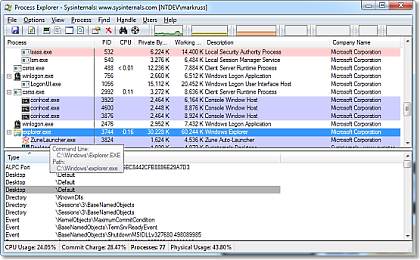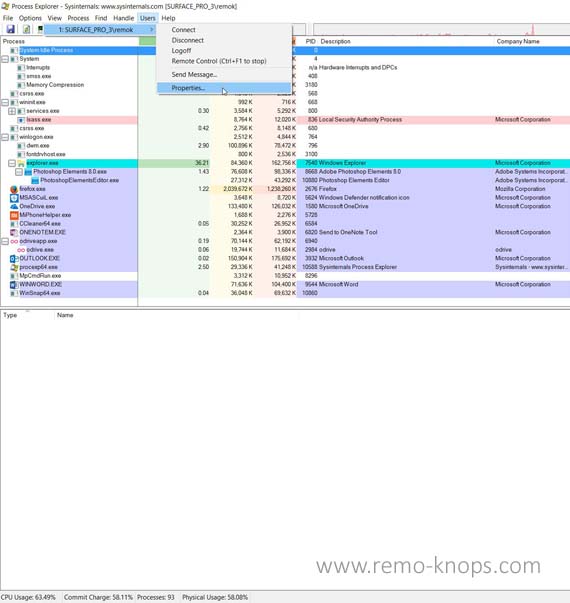

- #Sysinternals process explorer remote computer how to#
- #Sysinternals process explorer remote computer windows#
Due to an error, not all of the files were successfully uninstalled.A file required for the uninstallation to complete could not be run.The program’s built-in uninstaller does not start or does not operate properly.Possible problems that can arise during uninstallation of Remote Process Explorer

#Sysinternals process explorer remote computer windows#
The program is not listed in the Windows Settings or Control Panel.The program is regarded by the user and/or some websites as a potentially malicious.The program is being re-installed (uninstalled and installed again afterwards).The program is not as good as the user expected.The program crashes or hangs periodically/frequently.The program is not compatible with other installed applications.These are the main reasons why Remote Process Explorer is uninstalled by users: Some experience issues during uninstallation, whereas other encounter problems after the program is removed. It seems that there are many users who have difficulty uninstalling programs like Remote Process Explorer from their systems. What usually makes people to uninstall Remote Process Explorer This guide is the right solution to completely uninstall Remote Process Explorer without any difficulty. Windows Sysinternals Primer: Process Explorer, Process Monitor and More Process Explorer gets a lot of attention in the first Sysinternals Primer delivered by Aaron Margosis and Tim Reckmeyer at TechEd 2010.Remote Process Explorer helps you get comprehensive information about the processes that are running on a local or network computer in real time, look up processes on the Internet for retrieving additional details, as well as terminate them.ĭo you experience difficulty when you try to completely uninstall Remote Process Explorer from your system?Īre you looking for an easy solution to thoroughly remove it from your computer?.
#Sysinternals process explorer remote computer how to#
In this episode of Defrag Tools, Andrew Richards and Larry Larsen show how to use Process Explorer to view the details of processes, both at a point in time and historically.

The unique capabilities of Process Explorer make it useful for Quickly show you which processes have particular handles opened or DLLs Process Explorer also has a powerful search capability that will See the DLLs and memory-mapped files that the process has loaded. The top window has opened if Process Explorer is in DLL mode you'll It is in handle mode you'll see the handles that the process selected in The bottom window depends on the mode that Process Explorer is in: if The names of their owning accounts, whereas the information displayed in Window always shows a list of the currently active processes, including The Process Explorer display consists of two sub-windows. Handles and DLLs processes have opened or loaded. Process Explorer shows you information about which Ever wondered which program has a particular file or directory open? Now


 0 kommentar(er)
0 kommentar(er)
